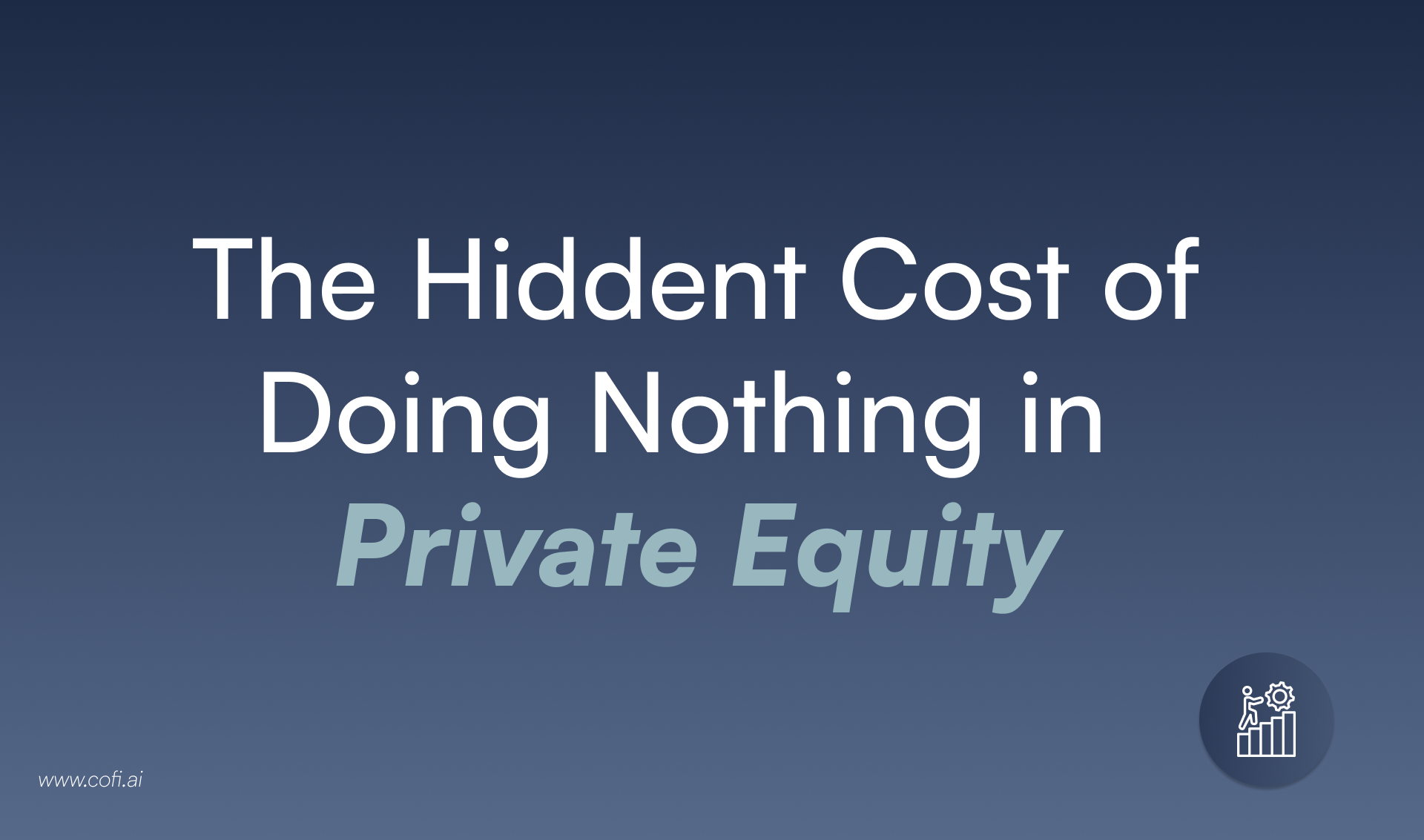The Missing Link: Where Deal Teams and Operating Teams Meet—and Why Technology Matters
Discover how private equity firms can align deal and operating teams from Day 1 to turn investment theses into faster value creation and results.
Get free trial Download Now
The Missing Link: Where Deal Teams and Operating Teams Meet—and Why Technology Matters
Discover how private equity firms can align deal and operating teams from Day 1 to turn investment theses into faster value creation and results.
Download NowWatch NowThe Missing Link: Where Deal Teams and Operating Teams Meet—and Why Technology Matters

Private equity firms have always been judged by thesis convertion into realized value. In today’s market—where fundraising is harder, add-on strategies are increasingly common, and LPs demand transparency—the margin for error has shrunk. The firms that win are those that turn well-underwritten theses into operational reality without delay. That’s where the intersection of the deal team and the operating (ops) team becomes the decisive battleground for value creation.
From Thesis to Traction: The Modern Expectations of Deal Teams
Deal teams historically focused on sourcing and underwriting: finding the right targets, building conviction, and negotiating price and structure. But the modern deal team is accountable for much more than getting the deal done. Partners and principals must demonstrate that the business will perform to the model—and quickly. Early wins (often within the first 100 days) validate the investment thesis, reduce execution risk, and materially influence exit timing and multiple.
The period between signing and first performance proof is now a major determinant of realized returns.
The Operational Friction That Kills Momentum
Despite clear stakes, many firms still struggle with three persistent frictions that derail Day-1 momentum:
- Data fragmentation and delay. Financials arrive in inconsistent formats, GL mappings differ, and getting a clean dataset takes weeks—delaying thesis validation.
- Thesis-to-ops translation gaps. Underwriting assumptions live in Excel models; operational plans live elsewhere. Translating those assumptions into measurable KPIs and tasks remains manual.
- Credibility and reporting risk. Investment teams must respond quickly to ICs and LPs. Without standardized reporting, credibility erodes and teams waste cycles on reconciliation instead of execution.
These aren’t theoretical gaps—they compound into missed synergies, slower integrations, and suboptimal exits.
What the Best Firms Are Already Doing Differently
Leading firms have invested in operating resources and playbooks. KKR Capstone, Blackstone’s operating playbooks, and Bain’s portfolio acceleration teams embed operating professionals into post-close processes. These teams drive repeatable plays—pricing, working capital, commercial excellence—and demand data-backed KPIs.
Yet people and playbooks alone aren’t enough. Execution at scale requires consistent, high-quality data and a mechanism to translate underwriting logic into operational action. There are market proof points of firms that have demonstrated how standardized portfolio data transforms oversight, benchmarking, and confidence.
The Valuation Impact: Why Day-1 Alignment Matters to Exits
Rapid, measurable alignment between thesis and operations improves confidence in future cash flows and reduces perceived risk—both of which support higher exit multiples and faster sale processes. When firms demonstrate early synergy capture, KPI adoption, and clean reporting, they reduce diligence friction and increase buyer confidence.
Operational proof has become as valuable as strategic narrative.
A Solvable Missing Link: Where Technology Bridges Deal and Ops
The missing link between investment thesis and operational execution isn’t more strategy—it’s faster, standardized information and automated thesis translation. Technology can close this gap through three levers:
- Rapid Ingestion & Normalization: Automatically unify financial data within 24–48 hours post-close, giving deal teams instant visibility into underwrite vs. actual.
- Thesis → KPI Mapping: Translate assumptions into operational KPIs and 100-day plans with owners, milestones, and P&L impact.
- Audit-Ready Reporting: Generate LP and IC-ready reports with traceable data lineage, preserving credibility and transparency.
In short, technology turns the investment thesis from a static spreadsheet into a living, measurable program.
How to Start—Practical Steps for Firms
- Define a Day-1 Must-Have Package. Standardize the data inputs required at close—GL exports, 12-month P&L, top customer list—and set a measurable expectation: first normalized dataset in <48 hours.
- Codify Top Playbooks into KPI Templates. Identify the value levers that drive most outcomes (pricing, AR days, SG&A) and map them to standardized KPIs.
- Invest in a Data Translation Layer. Choose systems that automate ingestion, normalization, and assumption-to-KPI conversion.
Firms that treat their data plumbing as strategic infrastructure see faster value capture and cleaner portfolio insights.
Conclusion: Ownership Equals Outcomes
Deal teams are judged by outcomes—but outcomes are delivered through operational discipline. People and playbooks matter, but technology ensures clarity and speed at Day-1. When investment thesis and operations align from close, firms capture synergies faster, reduce execution risk, and elevate valuations.
The missing link between conviction and value creation is now solvable—and technology is the bridge.
.png)












